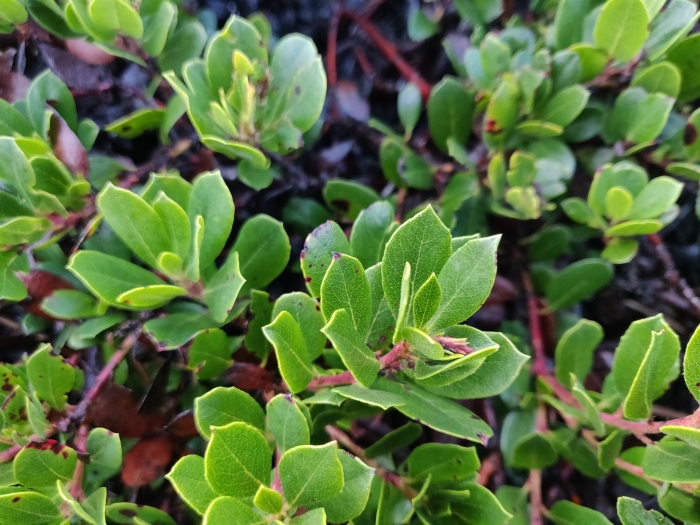Pacific Manzanita
(Arctostaphylos pacifica)
Pacific Manzanita (Arctostaphylos pacifica)
/
/

Alexander Wentworth
CC BY 4.0
Image By:
Alexander Wentworth
Recorded By:
Copyright:
CC BY 4.0
Copyright Notice:
Photo by: Alexander Wentworth | License Type: CC BY 4.0 | License URL: http://creativecommons.org/licenses/by/4.0/ | Rights Holder: Alexander Wentworth | Publisher: iNaturalist | Date Created: 2021-12-14T09:02:33-08:00 |
























Estimated Native Range
Summary
Arctostaphylos pacifica, commonly known as Pacific manzanita, is a threatened evergreen shrub endemic to the chaparral and scrub habitats of San Bruno Mountain in California. It is adapted to growing in mats on sandstone outcrops at elevations around 1,000 feet. The plant typically reaches a height of 4-24 inches with a sprawling habit. Pacific manzanita is characterized by its smooth, light brown bark and pastel green, serrate leaves. It is notable for its ability to use lignotubers for clonal reproduction, which allows it to survive fires, such as the 1964 Devil’s Arroyo fire.
Pacific manzanita is valued for its resilience and unique growth form, making it an interesting subject for native plant gardens and restoration projects within its range. It requires well-drained soils, typically sandstone-based, and thrives in full sun to part shade conditions. While it is not commonly used in general horticulture due to its limited range and threatened status, it is of high conservation value and can be a focal point in a conservation-minded garden. Gardeners should be aware that this species is not readily available in the nursery trade and should be sourced responsibly to avoid impacting wild populations.CC BY-SA 4.0
Pacific manzanita is valued for its resilience and unique growth form, making it an interesting subject for native plant gardens and restoration projects within its range. It requires well-drained soils, typically sandstone-based, and thrives in full sun to part shade conditions. While it is not commonly used in general horticulture due to its limited range and threatened status, it is of high conservation value and can be a focal point in a conservation-minded garden. Gardeners should be aware that this species is not readily available in the nursery trade and should be sourced responsibly to avoid impacting wild populations.CC BY-SA 4.0
Plant Description
- Plant Type: Shrub
- Height: 1-4 feet
- Width: 3-5 feet
- Growth Rate: Moderate
- Flower Color: Pink, White
- Flowering Season: Spring, Winter
- Leaf Retention: Evergreen
Growth Requirements
- Sun: Full Sun, Part Shade
- Water: Low
- Drainage: Medium, Fast
Common Uses
Bird Garden, Border Plant, Butterfly Garden, Groundcover, Low Maintenance
Natural Habitat
Chaparral and scrub habitats on San Bruno Mountain
Other Names
Common Names: Pacific Madrone
Scientific Names: , Arctostaphylos pacifica, Arctostaphylos uva-ursi var. saxicola,
GBIF Accepted Name: